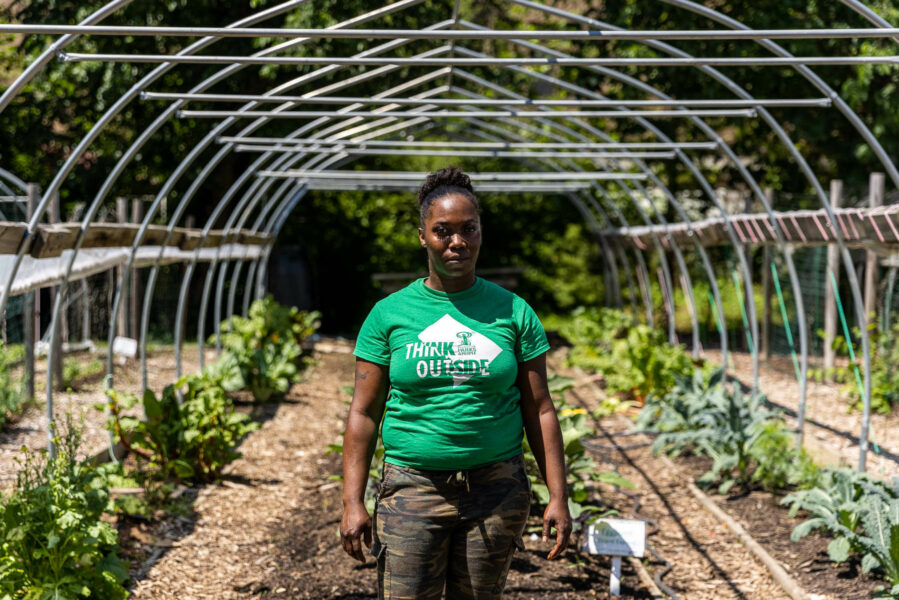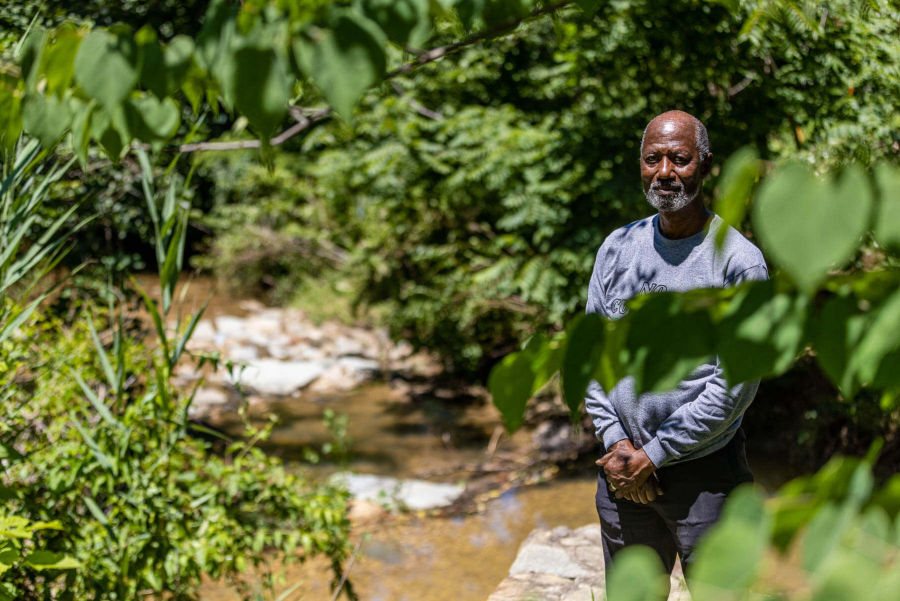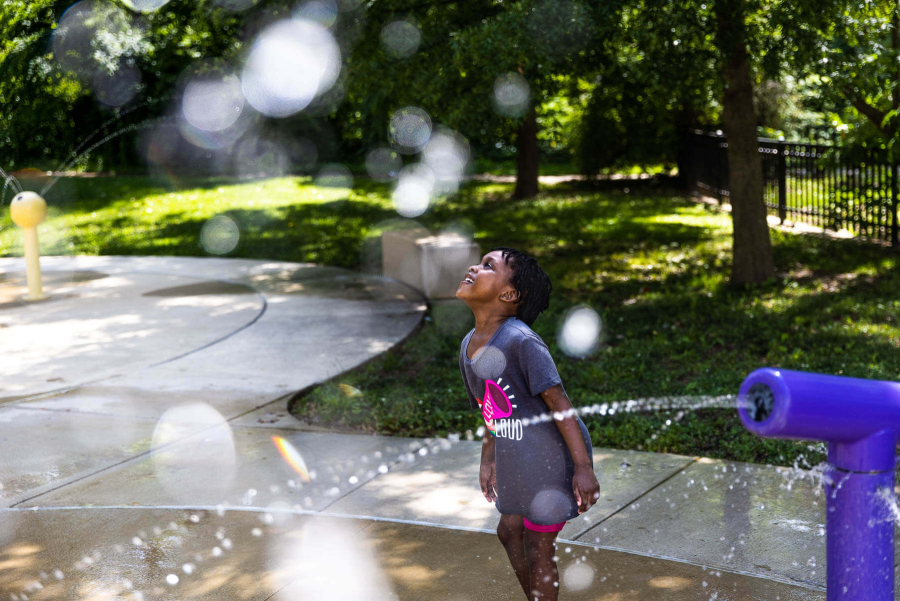As an Anacostia tributary is restored, D.C. residents reap the benefits

Watts Branch is not what anyone would consider a pristine stream. The distinctly urban tributary snakes through three miles of heavily developed Washington D.C., neighborhoods—running under roads, ducking behind overgrown lots—before ending its urban trek at the Anacostia River.
Despite its less-than-natural surroundings, Watts Branch is faring better than it has in the past, especially in Ward 7, a group of neighborhoods in northeast D.C. The area was a target for restoration in the early 2000s, when the Environmental Protection Agency (EPA) spent significant resources repairing the stream: stabilizing the banks, fixing sewer lines, planting trees and a dozen other restorative efforts.
As the largest tributary of the Anacostia, which drains into the Potomac River and then the Chesapeake Bay, Watts Branch is a key piece of the District’s efforts to reduce pollution.
“So goes Watts Branch, so goes the Chesapeake Bay,” explained Dennis Chestnut, Ward 7 community leader and board member of the Alliance for the Chesapeake Bay.
Now, residents of Ward 7 are slowly but surely reconnecting with the stream and its surrounding greenspace, ensuring that their slice of Watts Branch doesn’t fall back into its impaired state.

When we caught up with Chestnut, he was on his way to Marvin Gaye Park, which follows a stretch of Watts Branch, to help out with a youth-based clean up event. Chestnut is the type of resident who has his hands in all sorts of community events, and is something of an icon within the community.
“I’ve lived in this part of Ward 7 since 1949 when I was born,” said Chestnut. “I’m still living in my boyhood home.”
When Marvin Gaye Park was restored during the EPA’s involvement in the area, it was Chestnut, working alongside the nonprofit Washington Parks and People, who brought community members into the park’s revitalization. Back then, the park was named Watts Branch Park, but was nefariously nicknamed Needle Park due to the high drug use that took place there. After years of community-based improvements, the park was renamed to honor the Ward 7-born musician, and is now D.C.’s longest municipal park and a central part of Watts Branch’s conservation.
The 1.6-mile park has playgrounds, trails for walking and cycling, space for cookouts and several views of the stream. It hosts a variety of events, including the Marvin Gaye festival, and features a state-of-the-art recreation center with a number of eco-friendly features built into its flood-resilient design.
Marvin Gaye Park is even starting to welcome back wildlife, which bodes well for those critters living upstream, particularly at the Kenilworth Park & Aquatic Gardens, a refuge for D.C. plants and animals.
“The other day, I saw an egret in this portion of Watts Branch,” said Chestnut. “We could be fishing and swimming in it soon.”

“This all started as a vacant lot,” explained Ashleigh Mitchell, program manager at Washington Parks and People, as she motioned toward rows of blooming summer vegetables at the Marvin Gaye Greening Center.
Also in the early 2000s, Washington Parks and People joined a handful of community partners to reclaim the lot and transform it into a vibrant urban farm where residents can pick produce and students can learn about agriculture.
Mitchell, who is a life-long resident of Ward 7, manages the garden and serves as a community liaison.
The one-acre site provides introductory green job and enterprise training, cultural and educational programming, outdoor therapy and year-round food access. The property also contains a stage for performances, learning garden beds and grills for fresh produce cooking demonstrations. And coming soon, a new outdoor farm kitchen.
Similar to Marvin Gaye Park, the community garden helps Ward 7 residents connect with the area’s nature. Neighbors can literally taste the benefits of a healthy greenspace, and children can be in awe of what must feel like a sprawling botanical garden. Native plants and pollinators line the area, and with an organic approach, there are no pesticides that could make their way into Watts Branch.
“All we use is water, neem oil, fish emulsion and seaweed,” Mitchell said.
The community work continues to benefit downstream water quality, which is likely to draw in addition federal and cross-state support. And just as Ward 7’s section of Watts Branch benefits those areas downstream; sections upstream benefit the water running through Ward 7.
“That’s one of the great things about water,” said Chestnut, “It ties us all together.”

Comments
There are no comments.
Thank you!
Your comment has been received. Before it can be published, the comment will be reviewed by our team to ensure it adheres with our rules of engagement.
Back to recent stories